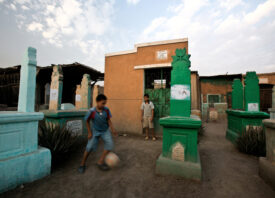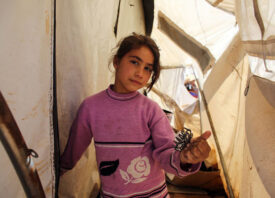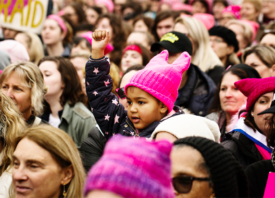Search this site
Animated Gifs Tell a Story of War and Hope on ‘Syria Street’

Abbas, Shopkeeper, Bab al-Tabbaneh

Nisrine’s family, Bab al-Tabbaneh

Hana Awad working, Bab al-Tabbaneh
“People get used to war,” photographer Brandon Tauszik says. Daily life doesn’t halt in the face of trauma; it persists in the background. It’s something photojournalists in Syria, like Nish Nalbandian and Ali Khara, have stressed over and over again. And it’s happening forty minutes from the boarder in the Lebanese city of Tripoli, where two neighborhoods remain locked in a shaky and precarious situation.
Tauszik embarked on the multi-media project Syria Street alongside the International Committee of the Red Cross, spending ten days on the thoroughfare that separates the mostly Sunni population of Bab al-Tabbaneh from the largely Alawite community of Jabal Mohsen.
Before the Lebanese Civil War erupted in 1975, Syria Street was known to residents of Tripoli as ‘Golden Street’ or ‘Golden Gate,’ thriving with stores, mosques, and commuters moving between their houses, schools, and places of work.
The war ended in 1990, and the situation grew less critical, but since the onset of the war in Syria, tensions have escalated once more, with the majority of Jabal Mohsen supporting Bashar al-Assad while most of Bab al-Tabbaneh falls in support of The FSA, Jabhat Fateh al-Sham, ISIS, and others.
When Tauszik visited Syria Street, the Lebanese government was stationed throughout the neighborhoods. Checkpoints were set up to enforce the ceasefire of 2015, but the marks of conflict still remained etched along the thoroughfare, which the photographer says can become “dangerous frontline” when tensions flare. More than 200 individuals have died in conflict here over the past decade.
Syria Street has fallen victim to financial uncertainty, and shops have been closed. Buildings that were destroyed still haven’t been repaired. A local playground has been ravaged by violence. It’s hard for young people to find work, but still, Tauszik discovered moments of hope for reconciliation and rebuilding.
“For fun, children play in the street, visit the homes of friends, and play video games at the internet cafe,” the photographer writes, “Adults and children here just want what everyone else does, a safe home and a normal life.”
When he was making the gifs that would become Syria Street, Tauszik was welcomed warmly by the locals. “Every time we’d visit someone’s home, there would be mandatory hummus and pita, coffee and cigarettes,” he remembers.
He devoted a day to making pictures at the Ruwwad non-profit facility on Syria Street, where young people could learn, volunteer, and plan for their futures. “Outside of the building’s windows are thick steel barricades that can swing closed to protect the students on bad days,” Tauszik says, “Inside the building, though, there’s a palpable energy of resilience.”
Mothers from both ends of the divide worked in the kitchen making meals for their kids, and pupils from both Bab al-Tabbaneh and Jabal Mohsen took classes side-by-side.
Find Syria Street— a collection of essays, interviews, gifs, and more— here. Learn more about the ICRC and the work they are doing in Tripoli here. There are many ways you can help.

Abbas’s shophelpers


Syria Street

Ahmad Ibrahim Ali, Jabal Mohsen


Alaa Mohanna, Bab al-Tabbaneh

View from Jabal Mohsen

Rami, Bab al-Tabbaneh
All images © Brandon Tauszik



